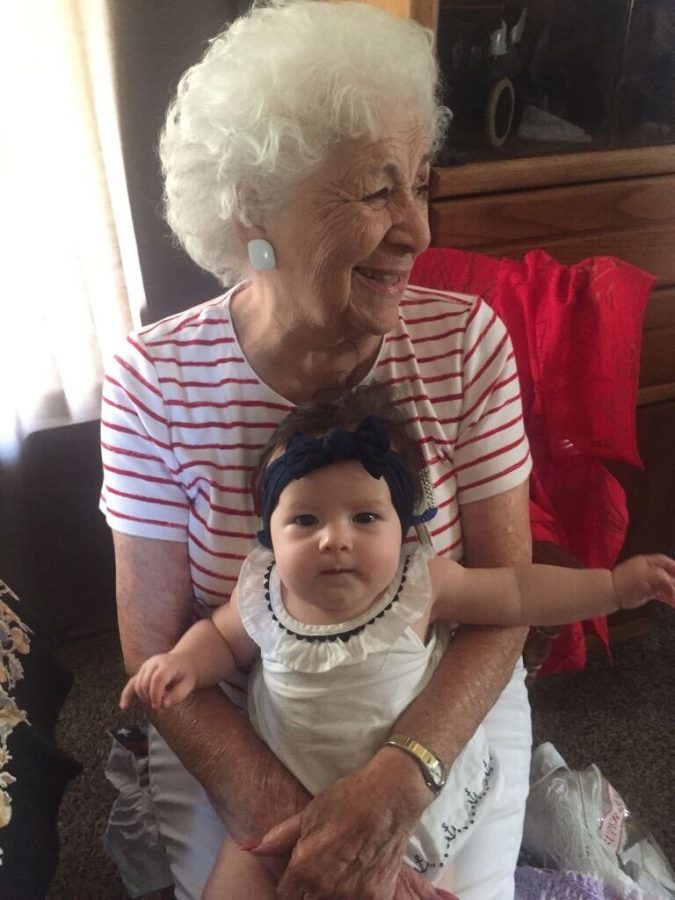The Silent Generation Speaks Up on COVID-19
Anita Acuña smiles wide with her grandchild, reflecting on the Polio epidemic during a new pandemic, COVID-19. Photo by Lauren Stratton.
COVID-19 isn’t the first nor will it be the last pandemic humanity will ever face. Past generations have all dealt with some sort of outbreak in their lifetimes and pulled through stronger than before. One such outbreak that took the world by storm was the Polio Epidemic in the 1950s.
Anita Acuña, 91, now a great-grandmother spends her time knitting blankets for new children in the family and catching up with old friends from throughout the years. But at the time of the Polio epidemic, she was newly married and had just become a mother. What was supposed to be an exciting time in her life turned into a terrifying time especially for her new daughter.
Acuña recalls the heart-stopping fear for her children’s lives as she had just given birth to her first child that year.
“I had just had my first daughter and I couldn’t have anyone come visit in the hospital, in case she could get sick,” Acuña said.
This was a common occurrence as people infected with polio showed no obvious symptoms until paralysis set in, making people wary.
At this time WW2 had recently ended and the generation of Baby Boomers had just been born endangering them as polio affects children under 5 years old for the most part.
“One of my close friends had come to our house to see my daughter leaving one of her daughters in the car as she had polio and was on their way to the hospital,” Acuña said.
Her friend’s daughter was only 3 when she contracted the disease leaving her crippled.
As a way of preventing spreading the virus people would quarantine mostly calling over the phone instead of gathering. One exception to this unspoken rule was still coming together and going to church.
“We had phones in those days and was our main form of communication as a way to protect each other. But we still went to church on Sundays and prayed for everyone affected by the virus and for your family’s good health,” Acuña said.
Religion played a big part in comforting those who have lost a loved one, or simply are looking for some stability.
This can also be seen today amidst the coronavirus as many people still go to church online and stay connected to their beliefs in these tough times. Some churches such as St. John Vianney have set up a huge tent, 6 feet apart chairs, and an altar outside in the courtyard of the church to hold small masses.
COVID-19 has been speculated to be a democratic hoax or as a way to get the upper hand in the upcoming election in 2020.
This was not the case back in 1950 according to Acuña, “people believed it was a real disease as they just had to look around and see the children confined to hospital beds.”
Still filled with patriotic pride as just five years prior the U.S had played a huge part in being victory to the Allies in WW2, so there wasn’t as much distrust and suspicion against the government.
Many people are wary to trust the developing vaccine for COVID-19 as they don’t know if there will be side effects down the road.
Acuña said, “We were desperate for a solution to this epidemic and we wanted our children to be safe so they got the vaccine first before adults after it was made public.”
Pictures were taken at this time depicting the long lines down the streets to get the vaccine set up in temporary shelters.
The Polio epidemic and the COVID-19 pandemic are similar with people wanting to prevent loved ones from getting sick and using religion as a beacon of light in these trying times. But they were still different as the diseases targeted different age groups and how people as a whole felt about the government without social media spreading rumors as it does today.

